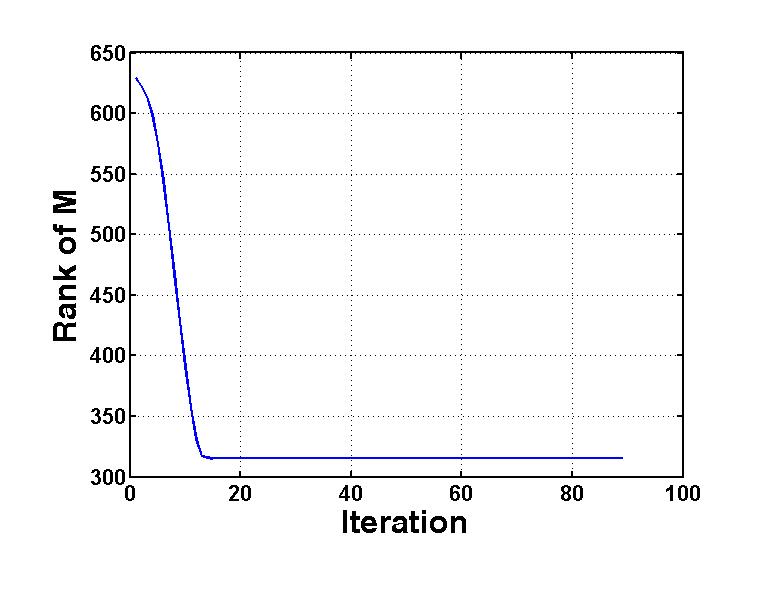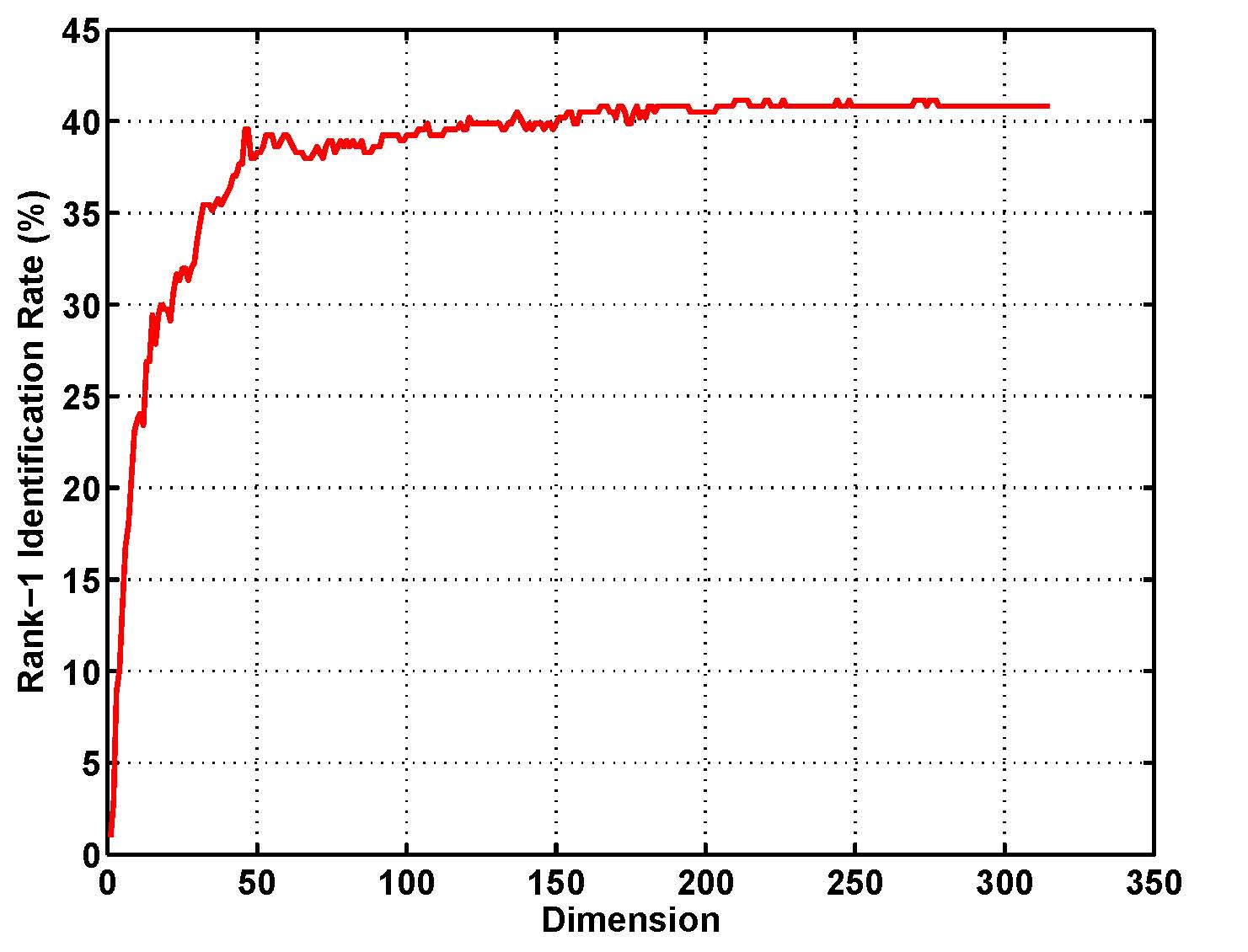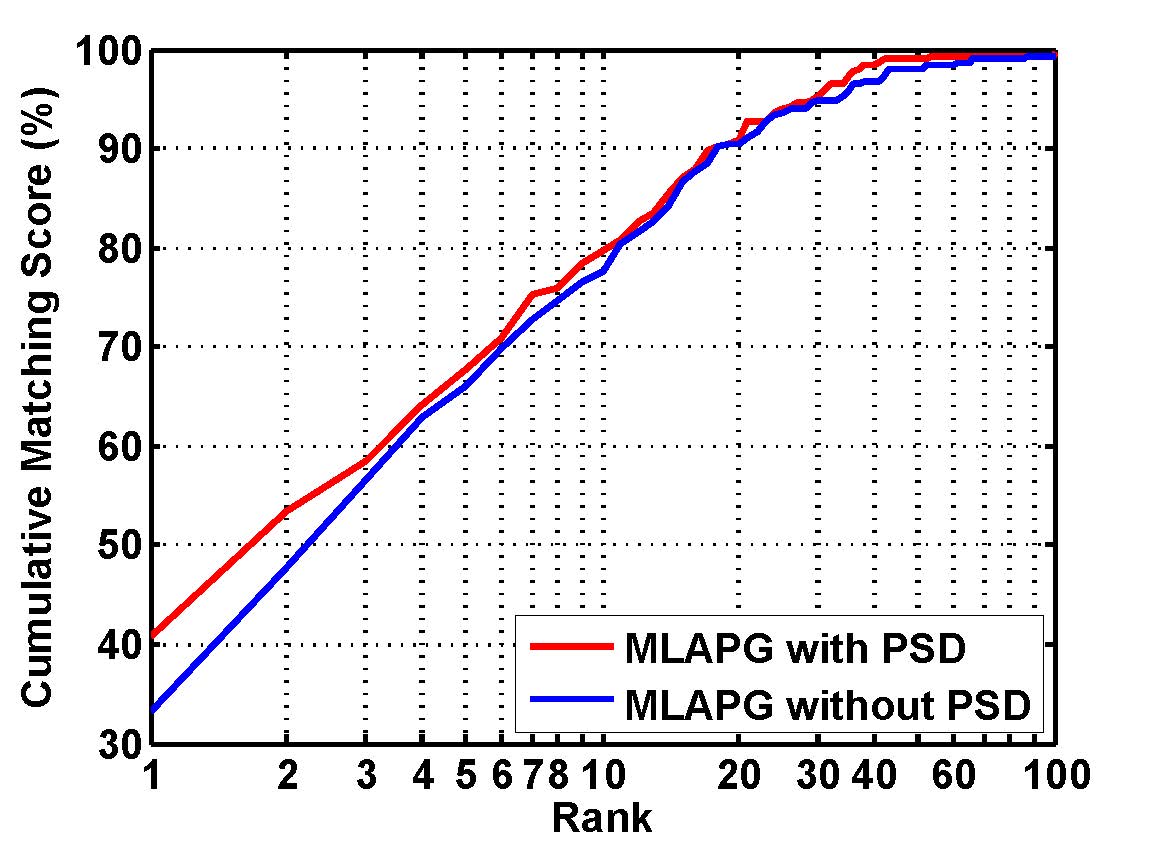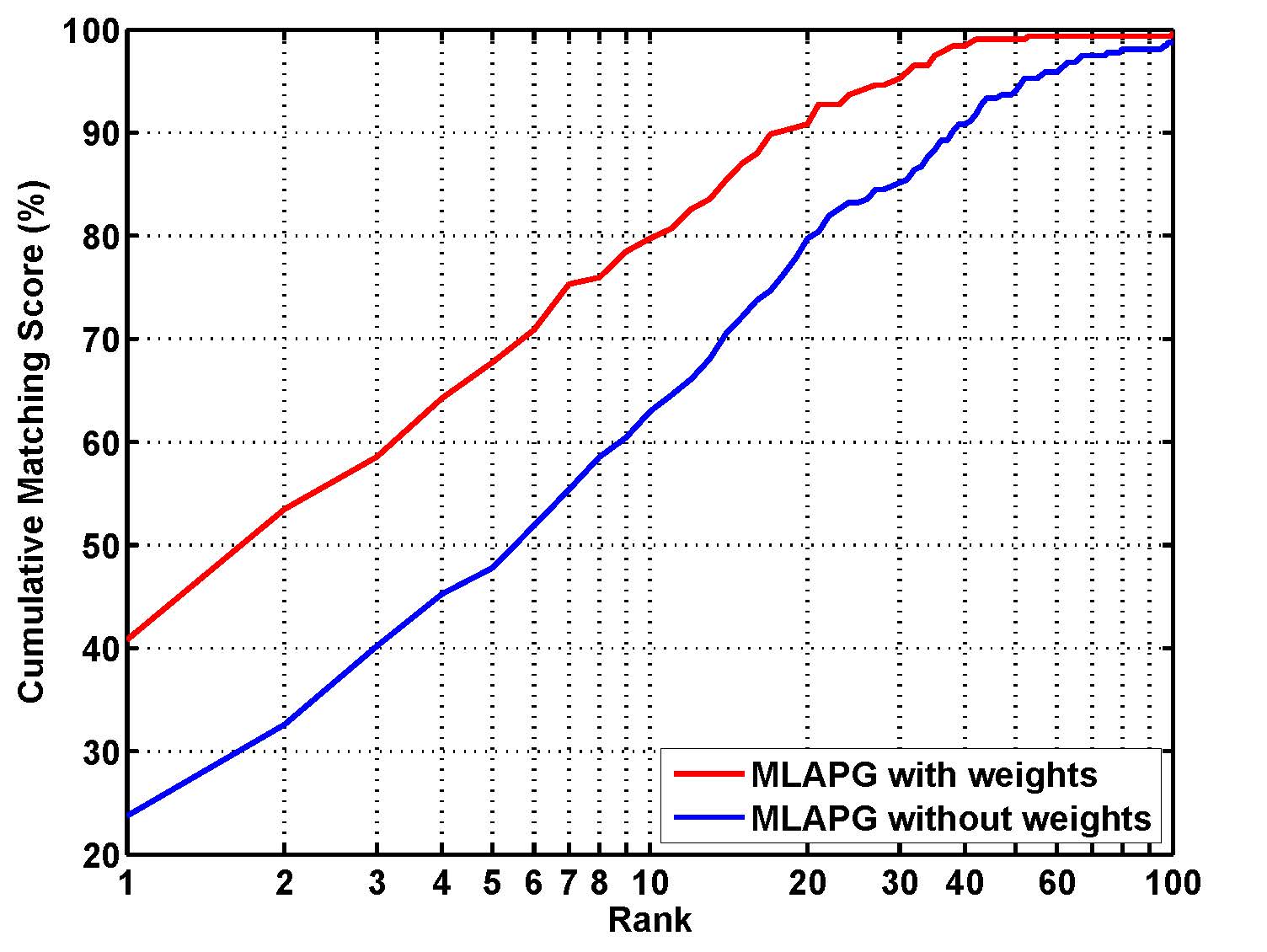|
Problems with existing metric learning methods:
- Applying PSD: expensive
- No PSD: noisy
- pos/neg samples: largely unbalanced
Contributions:
- APG solution to the PSD constrained logistic metric learning problem
- Asymmetric pos/neg sample weights to balance pos/neg costs
Advantages:
- PSD+APG leads to low rank and smooth metric
- APG solution is fast in convergence
- PSD and asymmetric weights lead to notable improvements
|
|
Download:
|
|
Results:

|

|
|
Fig. 1. Fast rank shrinkage.
|
Fig. 2. Effect of low rank selection.
|

|

|
|
Fig. 3. Improvement by PSD.
|
Fig. 4. Improvement by weighting.
|
Table 1. Summary of results (%) for the proposed MLAPG algorithm
| Database |
Rank 1 |
Rank 5 |
Rank 10 |
Rank 15 |
Rank 20 |
| VIPeR |
40.73 |
69.94 |
82.34 |
88.48 |
92.37 |
| QMUL Grid |
16.64 |
33.12 |
41.20 |
48.16 |
52.96 |
| CUHK01 |
64.24 |
85.41 |
90.84 |
93.35 |
94.92 |
| CUHK03 Labeled |
57.96 |
87.09 |
94.74 |
97.04 |
98.00 |
| CUHK03 Detected |
51.15 |
83.55 |
92.05 |
95.30 |
96.90 |
Note: CMC curves of the proposed MLAPG algorithm can be downloaded in cmc_curves.zip
|
|
Contact:
Shengcai Liao, scliao@nlpr.ia.ac.cn
National Laboratory of Pattern Recognition, Institute of Automation, Chinese Academy of Sciences.
|
|
References:
[1]Shengcai Liao and Stan Z. Li, "Efficient PSD Constrained Asymmetric Metric Learning for Person Re-identification." In IEEE International Conference on Computer Vision (ICCV 2015), December 11-18, Santiago, Chile, 2015. [pdf][poster]
|
| Last updated: Dec. 8, 2015 |



